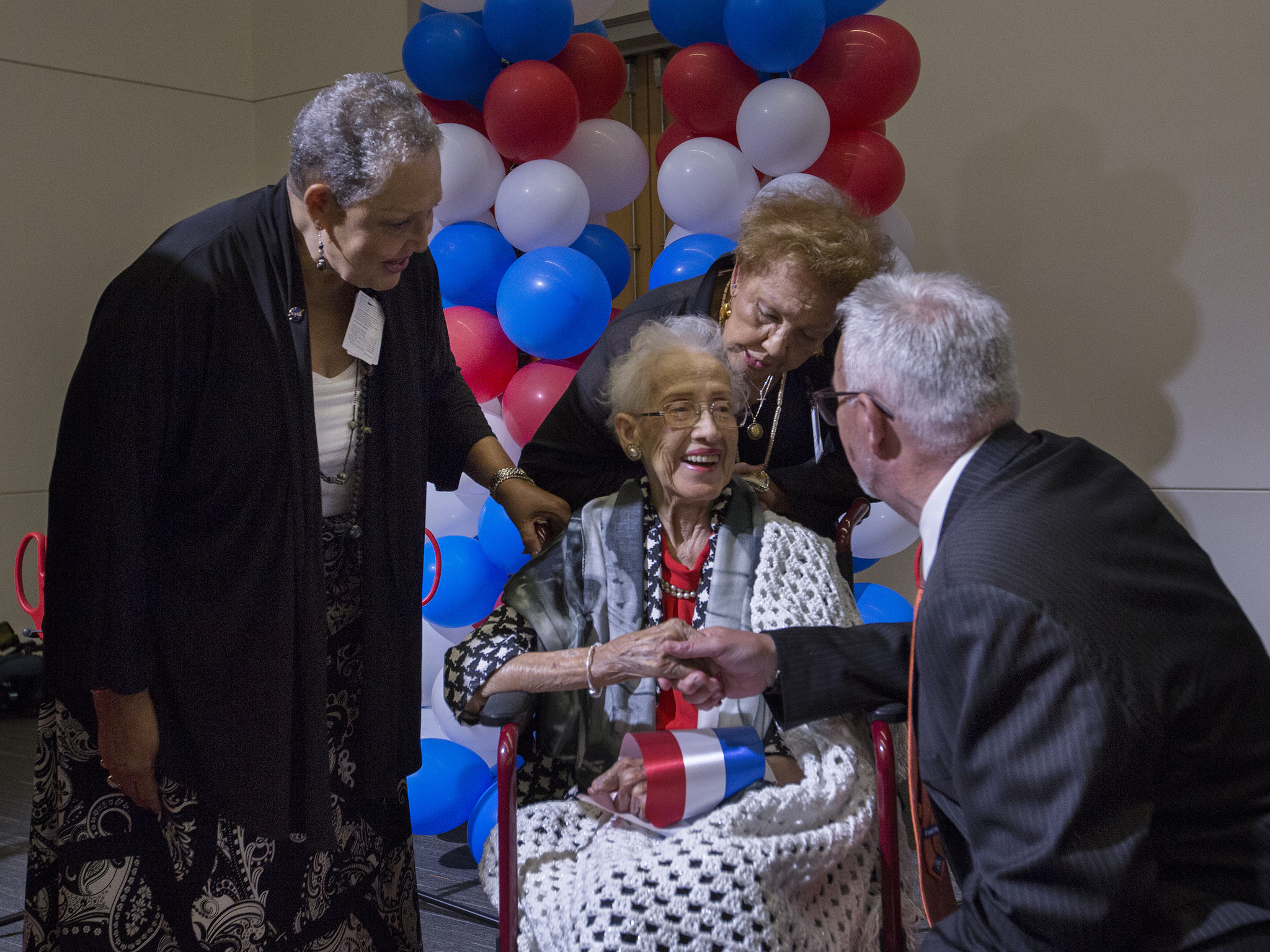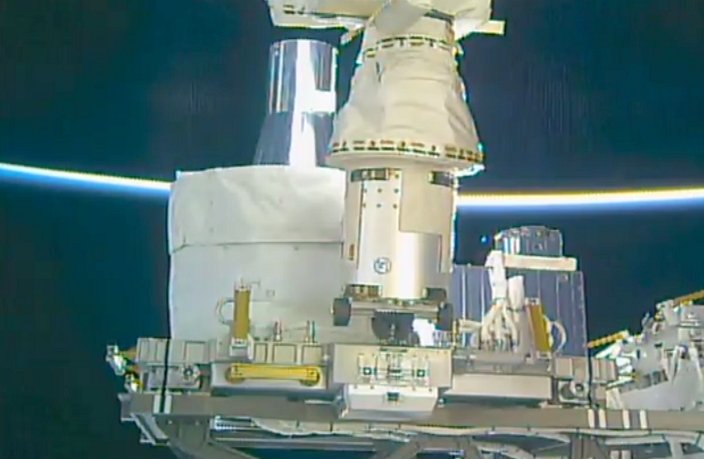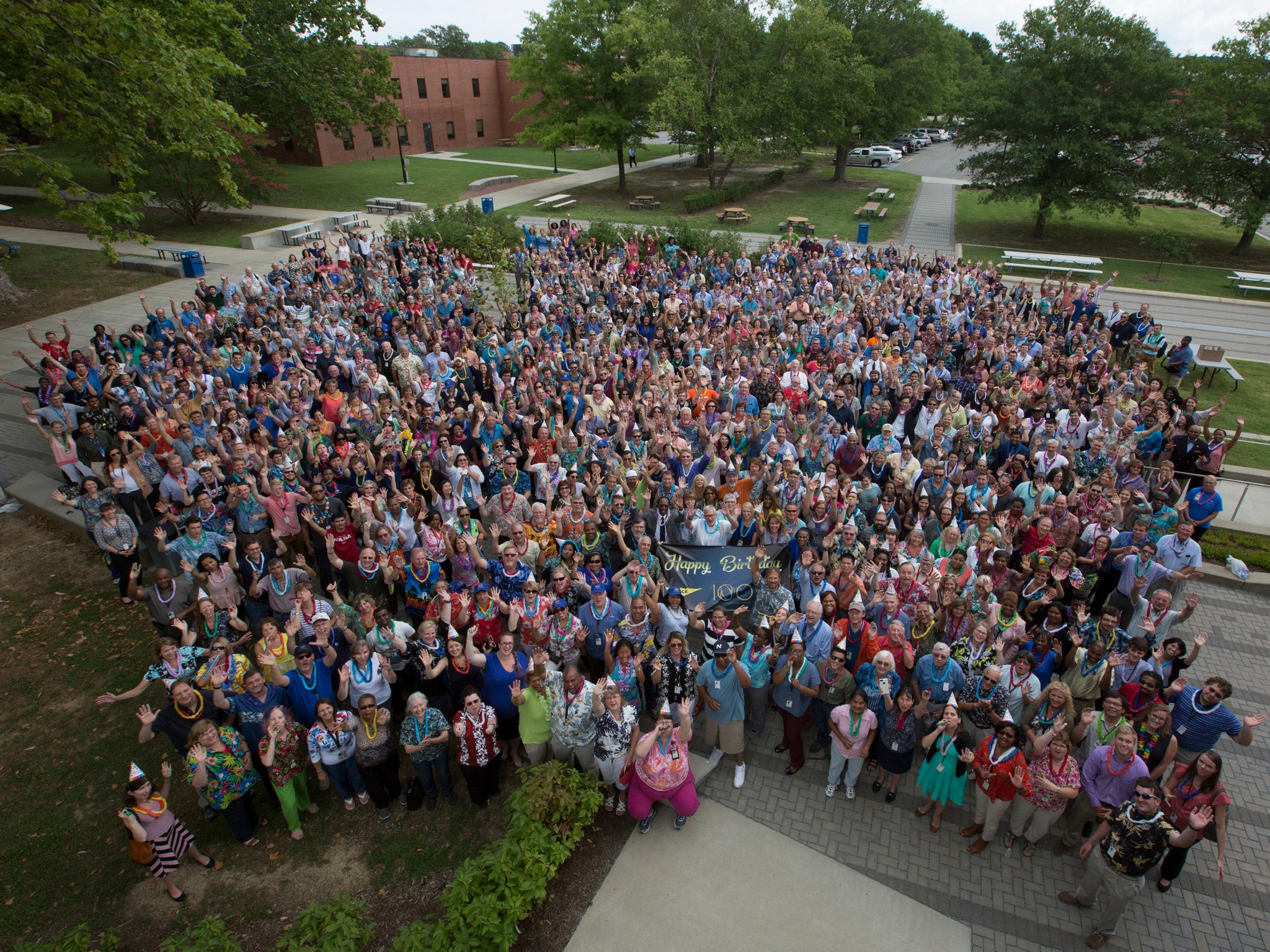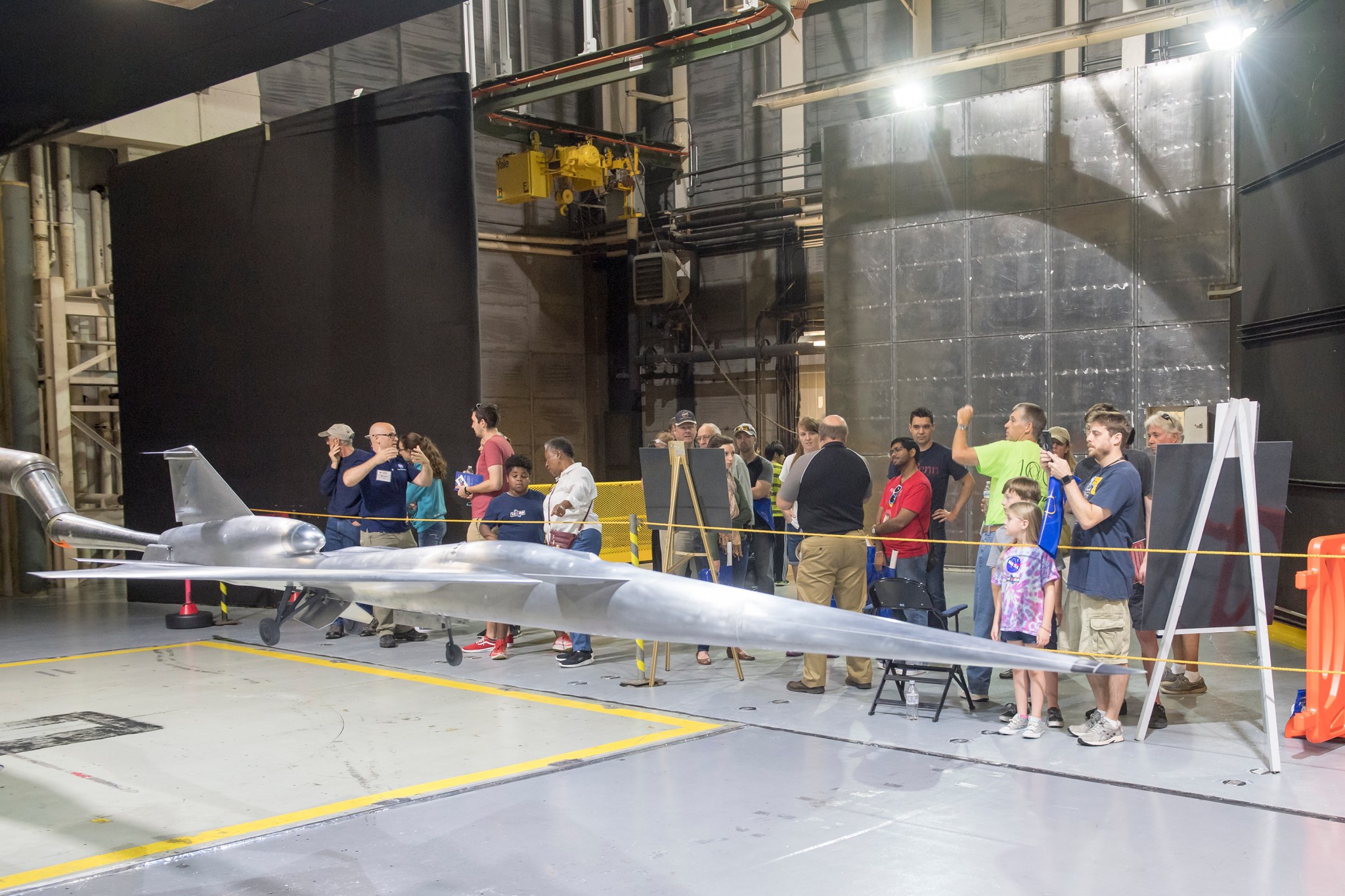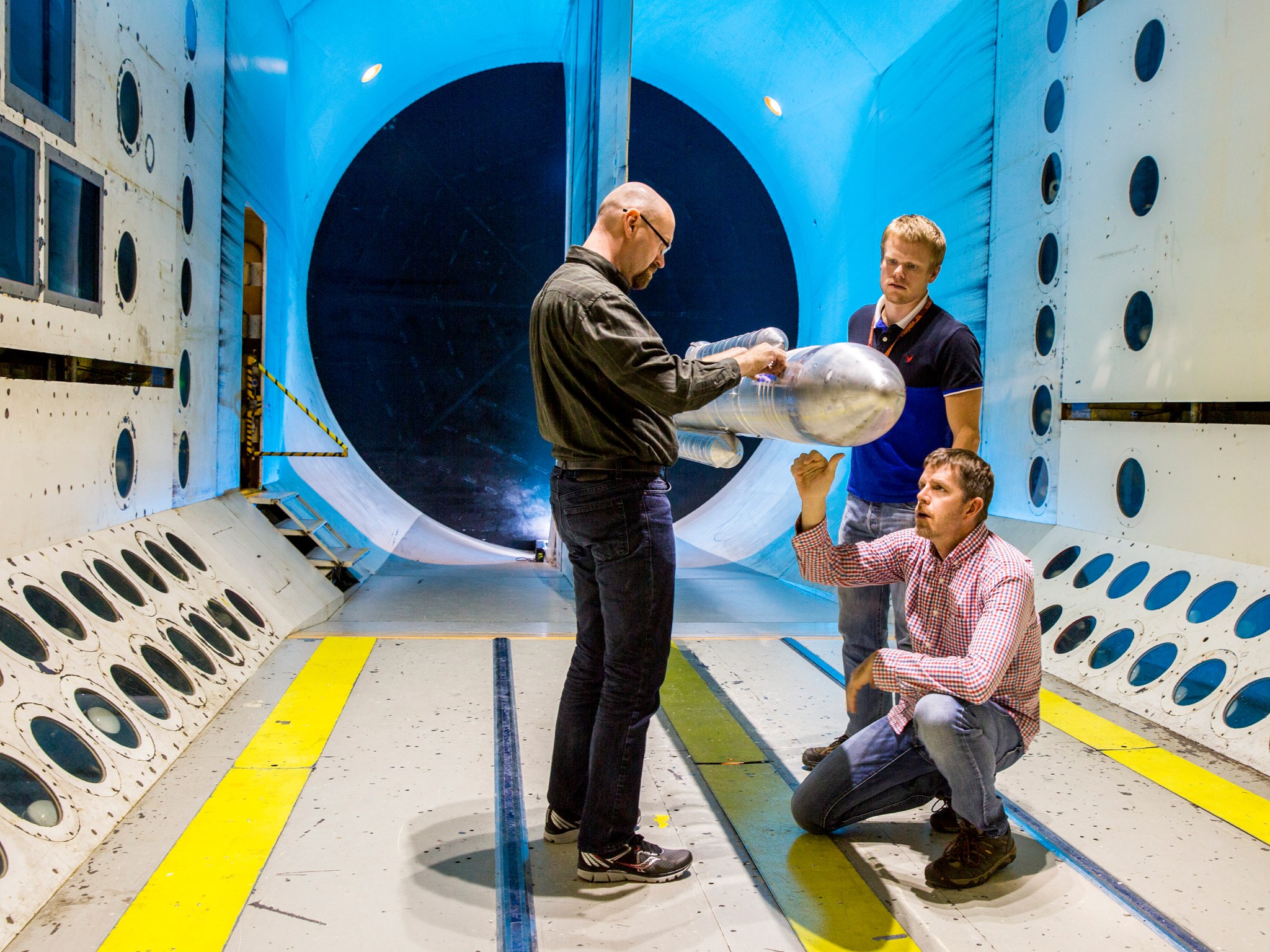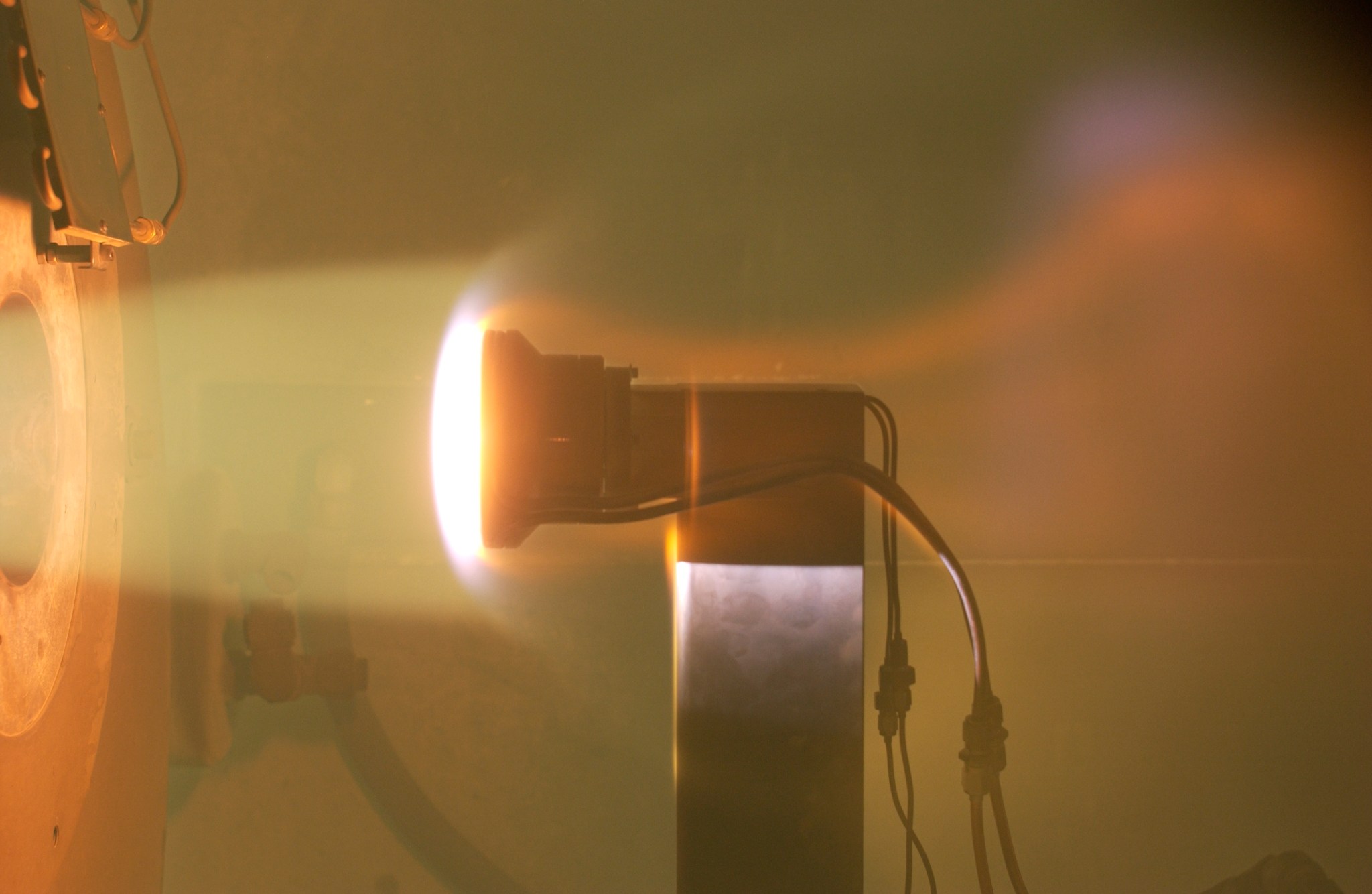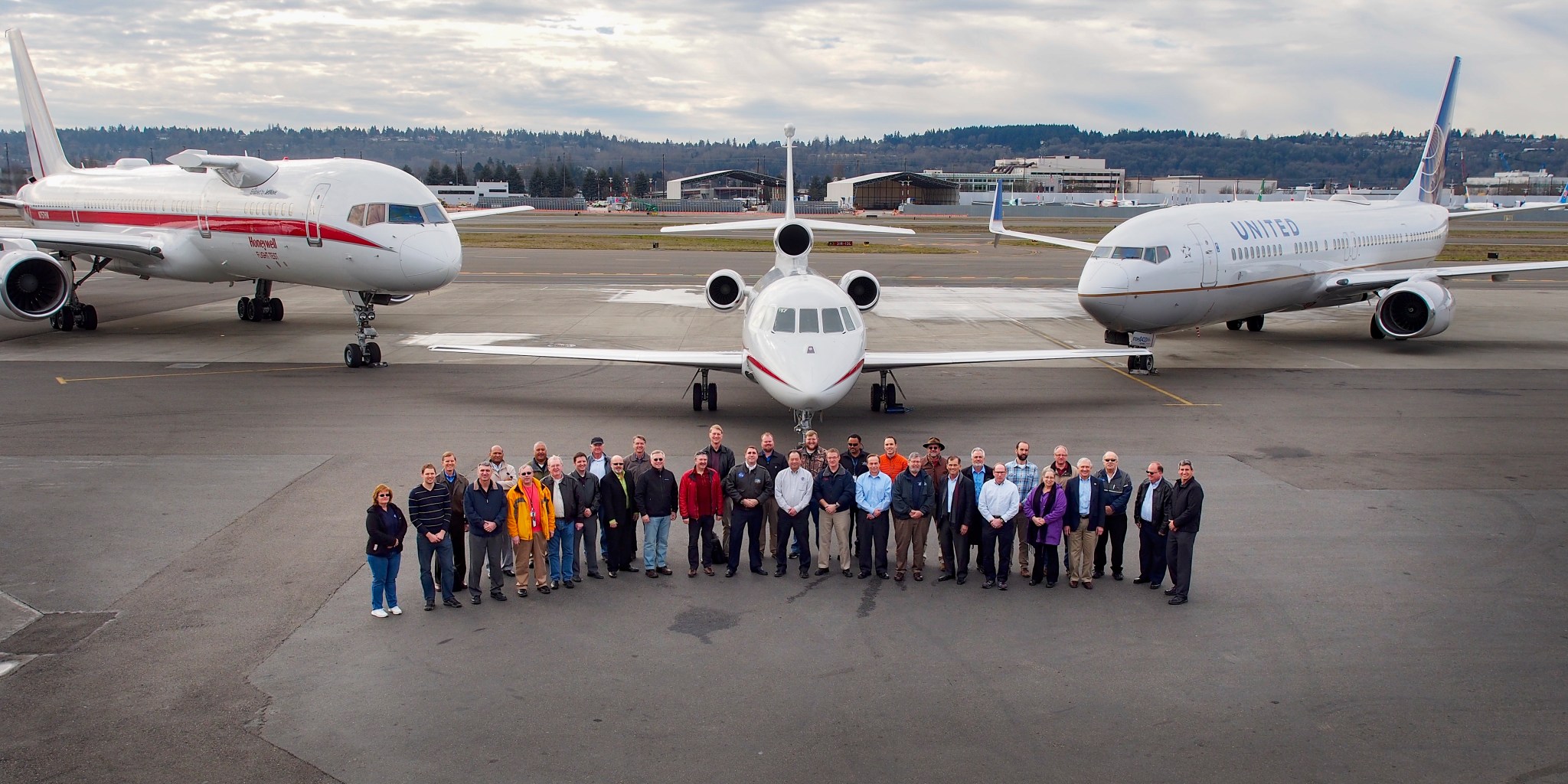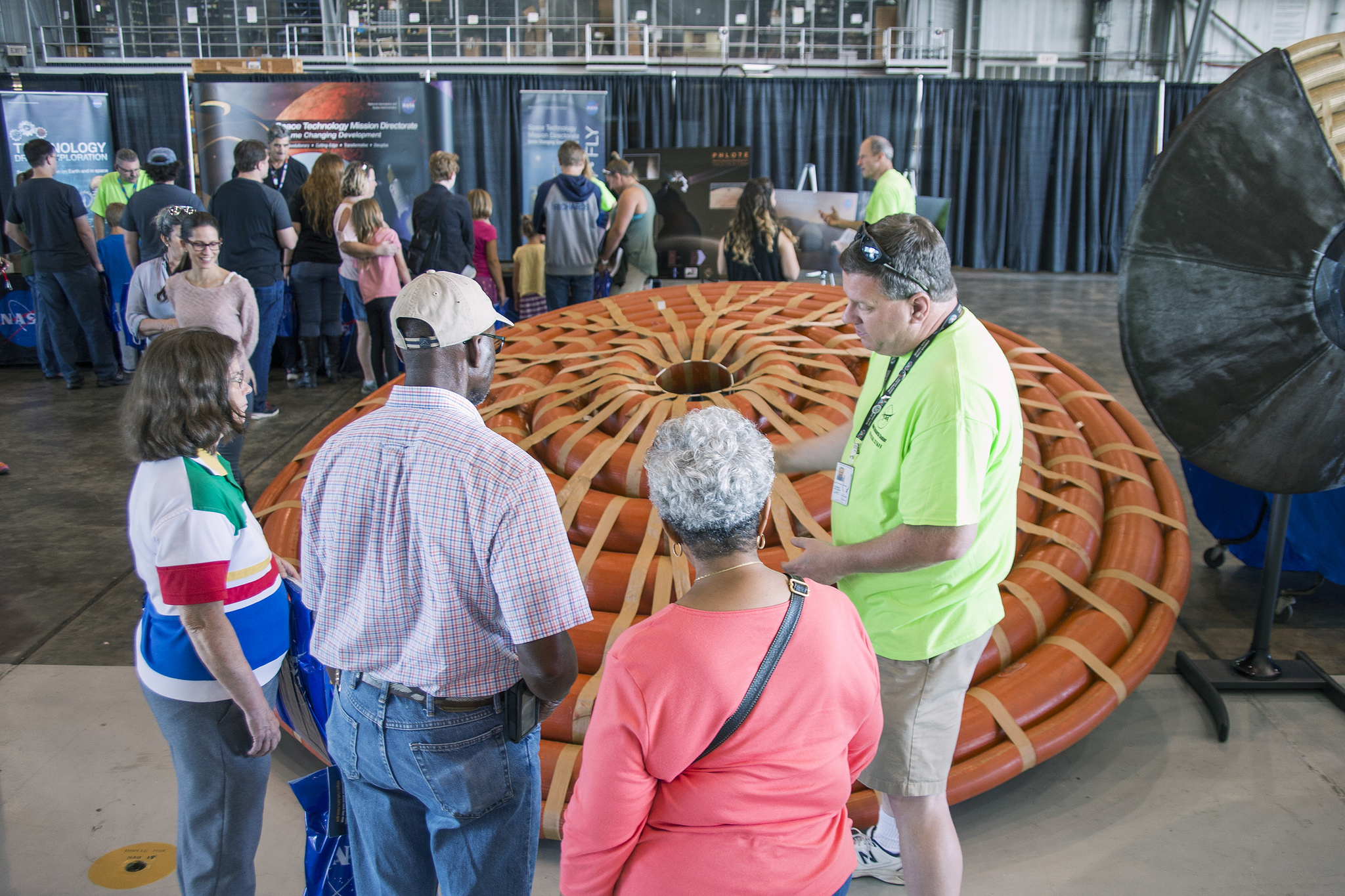For many at NASA’s Langley Research Center, 2017 zoomed past in a blur of commemorations, accomplishments and crowded special events.
To say it was a busy year would be an understatement.
Thanks to centennial celebrations, recognitions and “Hidden Figures” — a successful book and a hit motion picture — the agency’s oldest field center enjoyed a bit of pop-culture cachet. Elsewhere, major pieces of hardware developed through Langley’s leadership and know-how blasted into space. Big steps forward were made in the direction of restoring supersonic flight to American skies. And, the future looks increasingly bright for a NASA Langley technology that could one day help humans step onto distant, dusty Mars.
Here are some highlights from a year where everything and everyone seemed to be in constant motion.
SAGE success
Decades of planning, development and coordination reached a noisy crescendo on the morning of Feb. 19 when a SpaceX Falcon 9/Dragon spacecraft rocket blasted off from Kennedy Space Center in Florida. Included in the spacecraft’s payload was SAGE III on ISS, an atmosphere-studying instrument that had been painstakingly built under the guidance of the engineers and scientists at NASA Langley.
Once safely installed at its new home on the International Space Station, SAGE III set about its task measuring tiny particles and gases in Earth’s atmosphere with a technique called occultation. The technique involves examining light from the Sun or Moon as it passes through Earth’s atmosphere at the edge, or limb, of the planet.
The SAGE III science team issued its first solar occultation data in October and its first lunar occultation data just this month. Researchers rejoiced as they saw the instrument working as designed and helping to document the recovery of Earth’s protective ozone layer.
Building the future
In 2017, two major new facilities at NASA Langley made headlines. Leaders including Virginia Gov. Terry McAuliffe and U.S. Sen. Mark Warner visited the center April 11 to break ground on a $95.6-million, 175,000-square-foot (16,258-square-meter) Measurement Systems Laboratory, where new sensing technologies will be tested and refined to strengthen NASA’s work in space exploration, autonomous flight and Earth science. Scheduled to open in 2019, the lab will be a world-class workshop for developing sensors and the largest of all facilities envisioned in the center’s 20-year revitalization plan. Five months later, on Sept. 22, dignitaries were back at Langley to cut the ribbon on the center’s Katherine G. Johnson Computational Research Facility. The building’s namesake, age 99, took part in the festivities, as did Margot Lee Shetterly, whose book “Hidden Figures” about Johnson and other female NASA mathematicians drew national attention to an overlooked chapter of American history. “We are living in a present that they willed into existence with their pencils, their slide rules, their mechanical calculating machines — and of course, their brilliant minds,” Shetterly said. The $23-million, 37,000-square-foot (3,437 square-meter) facility will help Langley move forward in modeling and simulation and big data.
Centennial celebrations
NASA Langley’s 100th birthday was celebrated both near and far in 2017. While the big day itself was July 17, festivities sprinkled the year. Langley organized an ambitious series of special events that included an open house, a symposium, a gala, and a tribute performance at the Ferguson Center for the Arts. Both the Peninsula Fine Arts Center in Newport News and the Chrysler Museum of Art in Norfolk hosted exhibits honoring Langley’s centennial.
Langley also participated in a Maker Faire in Hampton and, in Washington, D.C., the American Institute of Aeronautics and Astronautics bestowed its Foundation Award for Excellence on Langley for its “100 years of excellence in aerospace achievements, scientific discoveries and technological breakthroughs.”
For the general public, the Centennial Symposium July 12-14 and the Centennial Open House Oct. 21 offered rare opportunities for a deep dive into the center’s rich history and trailblazing research in atmospheric science, aeronautics and space technology. Both NASA’s Acting Administrator Robert Lightfoot and Acting Deputy Administrator Lesa Roe participated in the symposium — where Apollo 11 astronaut Buzz Aldrin also was on hand to salute the center. Historians discussed Langley’s unique place in the story of American aerospace and experts imagined how the center’s research might change the world over the next 100 years. The open house — held on a picture-perfect fall day — drew an estimated 20,000 people to Langley’s campus. “That’s the reason we came today, to see what NASA is doing to shape the future,” said one visitor. “We got a glimpse of that.” Also, in December, the center dedicated a time capsule to be opened in 25 years.
QueSST progress
Efforts to restore supersonic passenger flight over land in the United States surged forward in 2017 thanks to a NASA’s work on QueSST, short for Quiet Supersonic Transport.
NASA and lead contractor Lockheed Martin determined on June 23 that the preliminary design is capable of flying at supersonic speeds and creating a soft “thump” instead of a disruptive “boom.” “We are now one step closer to building an actual X-plane,” said NASA Langley’s David Richwine, manager for the design effort. In the following months, the design was tested in NASA facilities, including Langley’s 14-by 22-Foot Subsonic Tunnel. Flight testing of an X-plane could begin as soon as 2021.
Prepping for deep space
In 2017, NASA Langley researchers worked on many fronts, paving the way for human exploration of deep space.
Engineers at Langley’s Transonic Dynamics Tunnel tested a 10-foot model of what will be the world’s most powerful rocket, the Space Launch System. The SLS will propel the Orion spacecraft into space, beginning an astronaut crew’s journey exploring the solar system. Inside Langley’s other wind tunnels, tests measured the aerodynamic forces that occur as booster-separation motors fire and push the solid rockets away. In some tests, pressure-sensitive paint was used to help engineers understand those same forces.
Meanwhile, in a fabrication lab, technicians worked to build a mock Orion crew module that will be used in a flight test called Ascent Abort Test 2, scheduled for April of 2019. That uncrewed test will measure how well the capsule’s Launch Abort System functions. The system is designed to move astronauts away from the launch vehicle if there’s a mishap during ascent. Also, researchers at Langley’s Landing and Impact Research Facility conducted a series of terrain landing tests of the Boeing Starliner spacecraft. The Starliner capsule is being developed in collaboration with NASA’s Commercial Crew Program as part of an effort to ferry astronauts to the International Space Station from U.S. soil.
Shadows to spotlight
With the movie “Hidden Figures” doing big business in theaters across the nation, the true story of Katherine G. Johnson and her fellow “human computers” captured the imaginations of millions. In January, the Hampton History Museum opened an exhibit called “When the Computer Wore a Skirt: NASA’s Human Computers,” and staff there found themselves fielding inquiries from as far away as Japan. The reaction took some by surprise. Ann Vaughan Hammond, daughter of Langley mathematician Dorothy Vaughan, had worked hard to find meaningful items for the exhibit. “She really had to do some digging through the family papers,” said museum curator Allen Hoilman. “They never would have guessed they would be movie stars.” In February, Johnson appeared at the Academy Awards, flanked by “Hidden Figures” stars Taraji P. Henson, Janelle Monáe and Octavia Spencer. A little more than a week later, “Hidden Figures” author Margot Lee Shetterly returned to NASA Langley to give a Colloquium series talk describing her research into the lives and work of unsung heroes and her unexpected Hollywood experience. Despite some artistic liberties, the film “captured the spirit of the women,” Shetterly said. “At the end of the day, I’m very happy and very grateful for what they have done to this story.”
Budgeting Earth’s energy
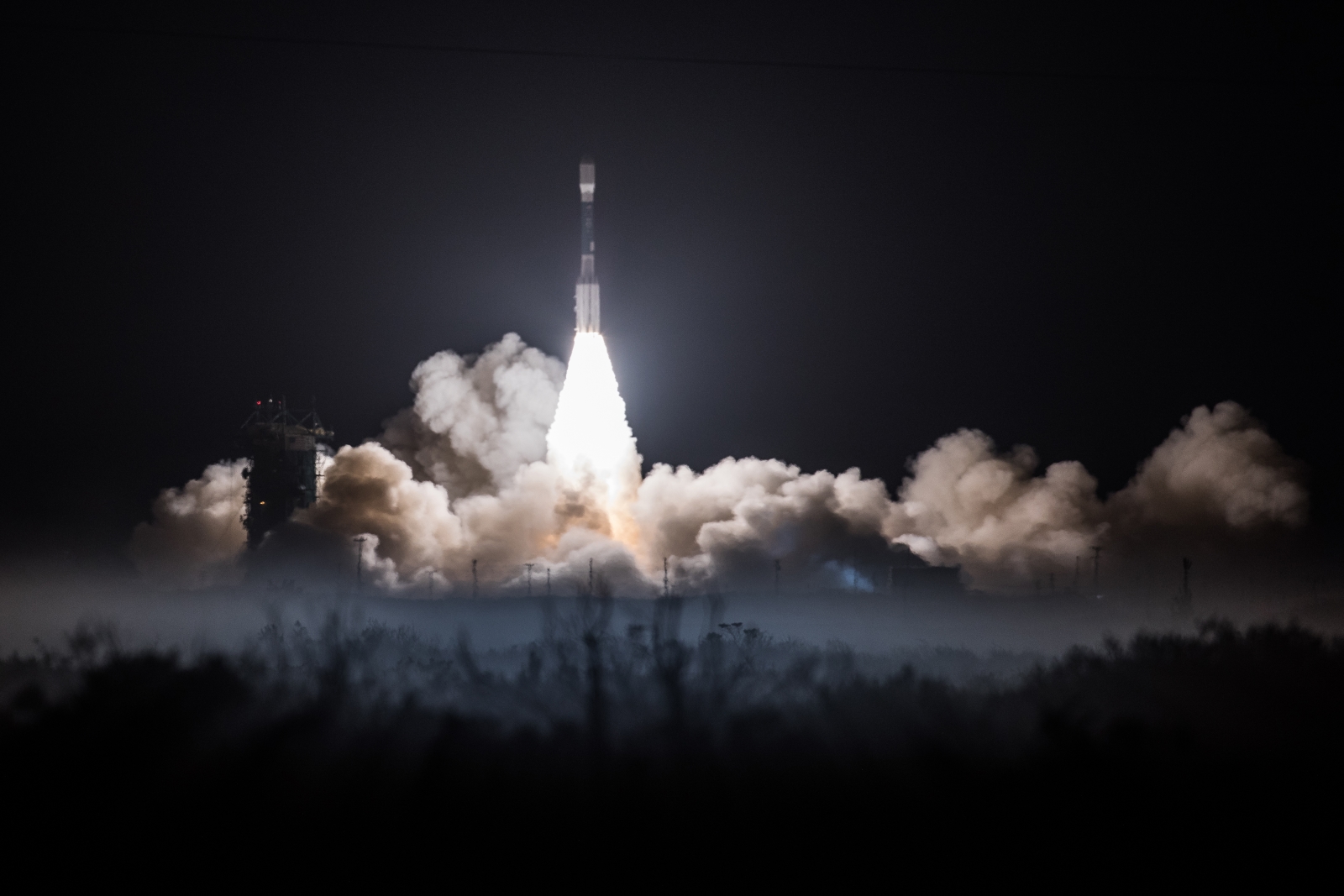
On Nov. 18, at Vandenberg Air Force Base in California, a rocket soared skyward carrying a National Oceanic and Atmospheric Administration satellite with a science instrument built under the guidance of NASA’s Langley Research Center: Clouds and the Earth’s Radiant Energy System Flight Model 6. Better known as CERES FM6, it measures the solar energy reflected by Earth, the heat the planet emits, and the role of clouds in that process. “CERES FM6 will add valuable data to the existing record and improve our understanding of Earth’s radiation budget,” said Norman Loeb, principal investigator for NASA’s Radiation Budget Science Project at Langley. “The data are critical to improving season and longer-term forecasts.” Built by Northrop Grumman and managed by Langley, CERES FM6 is the last in a series of instruments that provide a critical top-of-atmosphere dataset for Earth’s radiation budget. In space, FM6 joins five other CERES instruments orbiting the planet on three other satellites.
Inflating interest
A NASA Langley concept that may one day help NASA send humans to destinations across our solar system — including Mars — continued to gain steam in 2017.
The Hypersonic Inflatable Aerodynamic Decelerator (HIAD) is a developing technology that’s intended to enable the atmospheric entry of heavy payloads. HIAD overcomes size and weight limitations of current rigid systems by using inflatable materials that can be packed into a small volume and deployed to form a large heat shield before atmospheric entry.
Work has continued since 2012, when the Inflatable Reentry Vehicle Experiment-3, or IRVE-3, suborbital launch successfully demonstrated the ability of a 3-meter diameter HIAD.
Next up is the 6-meter Low Earth Orbit-based Flight Test demonstration of Inflatable Decelerator (LOFTID), a project being led by Langley. In early August, researchers tested HIAD heat shield material at Boeing’s Large Core Arc Tunnel in St. Louis, Missouri. Pieces of material 2.5 inches in diameter were subjected to temperatures up to 2,700 degrees Fahrenheit.
Atmospheric insights
NASA Langley researchers love to fly, and they did it this year to gather critical new insights into the complex world in which we live. Two major Earth science field studies — Atmospheric Carbon and Transport-America (ACT-America) and the North Atlantic Aerosol Marine Ecosystem Study (NAAMES). Two sets of ACT-America flights, one in winter and one in fall, looked at the influence of seasonal weather systems on the transport of carbon dioxide and methane around the eastern United States. Measurements from ACT-America will help tell a four-season greenhouse gas story and add important data to future climate models. Likewise, measurements from NAAMES, which took to the air and sea in late August and September, will help scientists better understand the annual plankton cycle in the North Atlantic. Despite their tiny size, plankton are strongly interconnected with climate and life on Earth. The 2017 field campaign looked at the declining phase of the cycle.
Smoother air traffic
A new air traffic technology, Flight deck Interval Management (FIM) seeks to improve the efficiency of flights landing at the nation’s airports. The cockpit-based system strives to safely increase the number of airplanes that can land on the same runway by more precisely managing the time, or interval, between each arrival. In February, researchers took the concept out of the lab and into the skies.
They conducted test flights aboard a Boeing 757 and a Dassault Falcon business jet provided by Honeywell, and a Boeing 737 provided by United Airlines. The aircraft flew together above Washington state during 18 days of tests spread over a month. “This has really accelerated the future implementation of interval management,” said NASA Langley researcher Kurt Swieringa. “By contracting with Boeing, Honeywell and other avionics vendors we’ve essentially been able to transfer knowledge to them, so they kind of have a leg up in creating their own interval management prototype in the future.” The initiative is part of NASA’s Air Traffic Management Technology Demonstration-1, a coordinated effort among NASA, the Federal Aviation Administration and industry to weigh new technologies and techniques.
More year in review
NASA Langley’s top five most-read stories of 2017
- NASA Langley’s Katherine Johnson Computational Research Facility Officially Opens
- Museum Exhibit Reveals the NASA Langley Human Computers from “Hidden Figures”
- Student-Made Mars Rover Concepts Lift Off
- HIAD Heat Shield Material Feels the Burn During Arc Jet Testing
- SLS Shocked During Wind Tunnel Testing to Better Understand Rocket’s Transonic Behavior
NASA Langley’s top five most-viewed image features of 2017



























